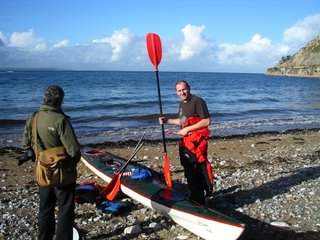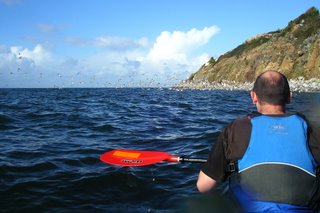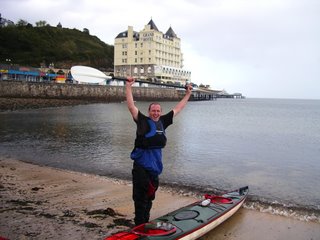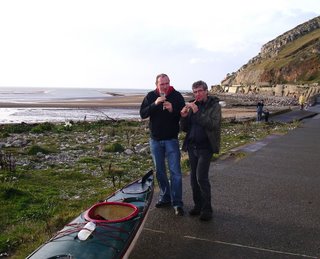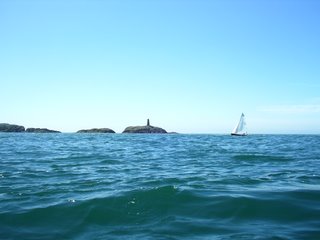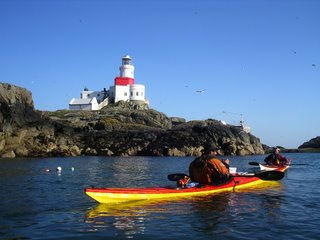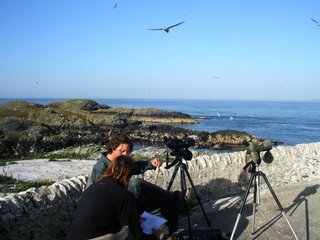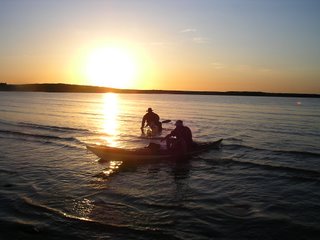On Saturday morning we were joined by Kirstine and Phil. As Kirstine had only very limited experience on rivers, our first river was the Eden in the North-East Lakes. Phil, like me has paddled many of the rivers troughout the UK and the French Alps.
 The Eden Valley has a reputation for its stunning beauty and for typically 'English' and 'Quaint'! Nevertheless, the surrounding natural beauty could not defeat the butterflies in Kirstine's stomach, nor the nerves that were generating them.
The Eden Valley has a reputation for its stunning beauty and for typically 'English' and 'Quaint'! Nevertheless, the surrounding natural beauty could not defeat the butterflies in Kirstine's stomach, nor the nerves that were generating them.Once Mark and I had left his car downstream at Armathwaite we drove back up to Lazonby to get started. Once on the water we organized ourselves. Mark and I would take turns at leading and Phil generally watched out at the back.
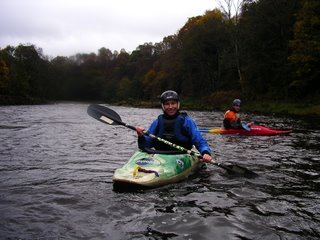 Once we had successfully run two or three rapids the anxiety from the beginning of the trip left Kirstine to be replaced with excitement.
Once we had successfully run two or three rapids the anxiety from the beginning of the trip left Kirstine to be replaced with excitement.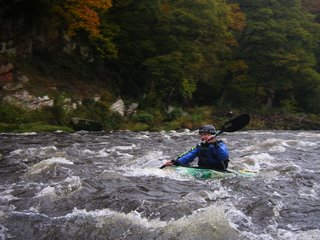 Kirstine was clearly full of anticipation for what lay around the next bend in the river.
Kirstine was clearly full of anticipation for what lay around the next bend in the river.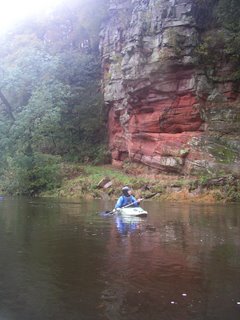
The middle to lower section runs through a stunning gorge with towering sandstone cliffs.
After we finished on the River Eden, Zoe insisted we do another river so we headed off into the central Lake District for a sort run down the River Rothay. The Rothay gives a relatively short but interesting run which we started where the river drains Grassmere. It had been raining all day in the central lakes, a fact we had been oblivious to in the Eden Valley, over to the east. The river was burting its banks and I was glad Kirstine had decided one river had been enough for the day. The river continued fast between trees until we found respite upon entering Rydal Water through reedbeds.
Gentle mist began to lie across the water adding to the beauty of the surrounding scenery, which gave some distraction from the monotiny of paddling across nearly a mile of flat water.
The pace quickened as we left the lake, down the river to continue through the Rydal Estate with its many 'DO NOT' signs. Some heavier rapids led us on towards Ambleside, trees continued to make our journey difficult, Zoe briefly became intimate with a bank side Sycamore. The tree's lower limb bayed her to swim, and Zoe (politely) obliged. I chased her boat downstream through the trees, one eye on the boat another on what else the river could next present. I was now on my own on the river. Mark, having secured Zoe to dry land, was now chasing me (and the boat) on foot. Every now and then I would be concious of by-standers on the riverbank. The river was running fast and I was confident the I could shunt the swamped boat to the side, but it was nearly a mile down stream before the kayak came to a reluctant rest.
There was only a short 500 yard paddle to Windermere and our weary finish in the half light in Waterhead Bay.
Sunday Morning
 The Sunday morning was bright and breezy, water was still pouring down from the fells so we headed off to the Beautiful 'Duddon Valley' in the south western Lake District. The River Duddon is a little more challenging that what we had paddled on the previous day, with the added excitement of some decidedly 'tricky bits'.
The Sunday morning was bright and breezy, water was still pouring down from the fells so we headed off to the Beautiful 'Duddon Valley' in the south western Lake District. The River Duddon is a little more challenging that what we had paddled on the previous day, with the added excitement of some decidedly 'tricky bits'.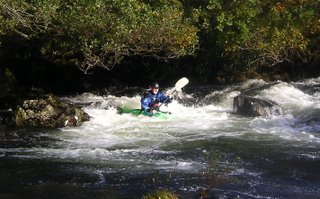 Mark was the only one to run 'Gill's Folly'. A scene of many 'Out of boat experiences'.
Mark was the only one to run 'Gill's Folly'. A scene of many 'Out of boat experiences'.I have paddled the River Duddon many times but never so early on in the (whitewater canoeing) season. My lasting memory for that relatively un-eventful day was one of the friendly anglers. There can be fierce conflict between anglers and canoeists. Fortunately on that day everyone shared the beauty of the Duddon and all its challenges, with a cheery wave and mutual greetings, symptomatic of human nature at its best!
